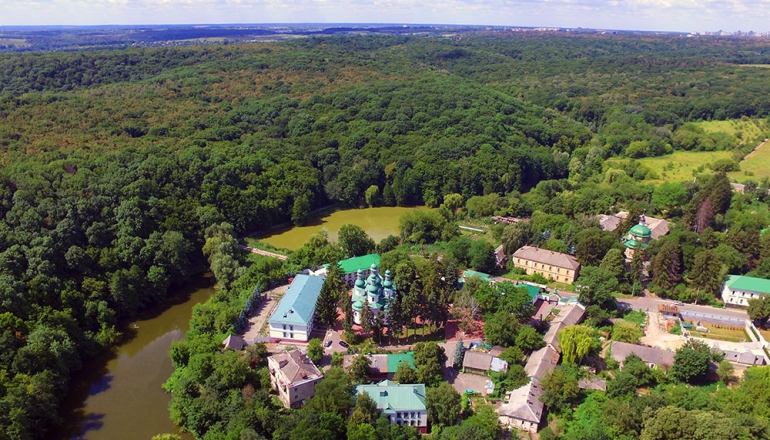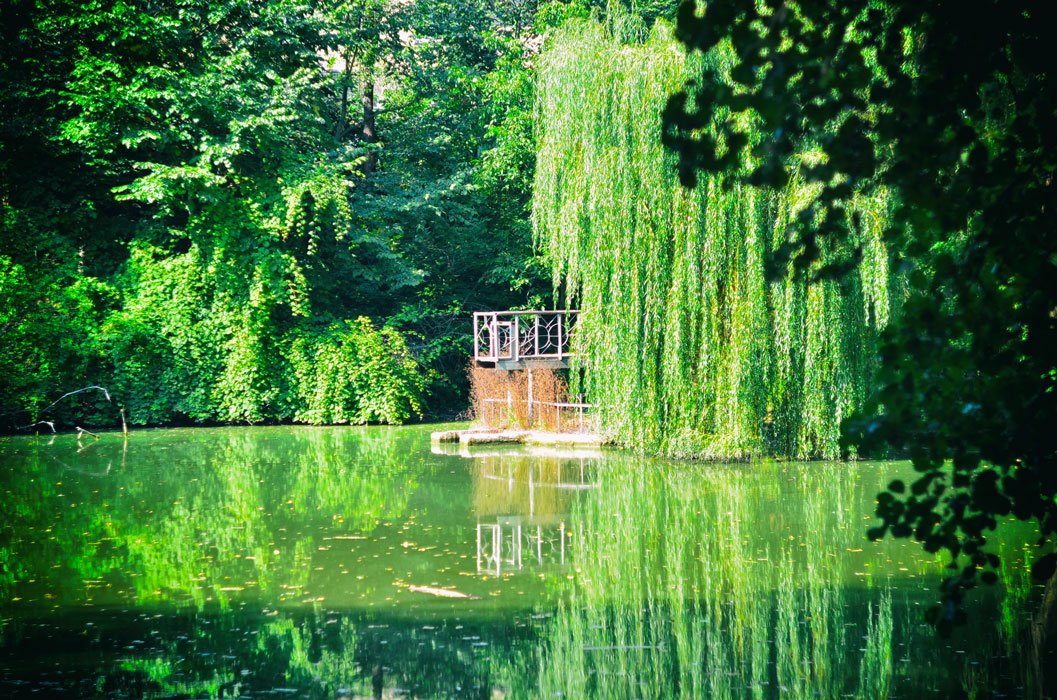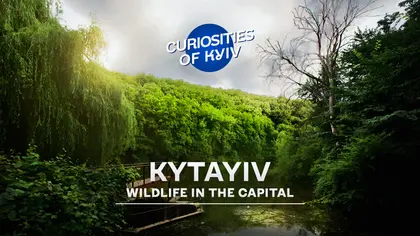Kytayiv - a park of incredible beauty that impresses with its pristine nature, amazing cascades of lakes - stretched above the Dnipro River valley just 9 km south of Khreshchatyk. This place has a very strong energy and is one of the most favorite places of rest for Kyiv residents. This is not surprising because the Kytayiv archaeological complex, which since 2001 has been recognized as the Kytayiv Settlement and Burial Mound historical monument of national importance, is located here on the territory of almost 62 hectares.

The name of the area probably comes from the Turkic word "kytay" - fortification, fortress. There is also a legend, known since the second half of the 18th century, which claims that Andriy Boholiubsky, the grandson of Volodymyr Monomakh (the Grand Prince of Kyiv), had his country residence on the hillfort. The legend apparently arose thanks to a document forged in the 16th century - the only document that indicates that the second (non-Christian) name of the prince was Kytay.
JOIN US ON TELEGRAM
Follow our coverage of the war on the @Kyivpost_official.
Walking around the mystical landscapes of the Kytayiv Park, you can see the remains of the Ancient Rus fortress, the ancient city of the 9th-10th centuries, burial mounds, and cave cells from the times of Kyivan Rus. Here you can immerse yourself in the holy font and visit the famous Kytayiv Monastery, the history of which dates back to the 18th century. Since then, Kytayiv has become a place of pilgrimage for thousands of believers and to this day remains Kyiv's Mount Athos.
The monastery has a unique architecture: its courtyard has the shape of a hexagon, on which the Trinity Church built in 1768, the Church of St. Seraphim of Sarov, the bell tower, the refectory, cell blocks, as well as the well-known Kytayiv Caves are located.
The entrance to the Kytayiv Caves was accidentally discovered in 1857 after a landslide. However, serious research was conducted here only in 1910 under the leadership of the famous Kyiv archaeologist O.D. Ertel. Then several trenches were dug, which cut through the underground passages completely covered with earth. In the end, the structure of the underground labyrinths and the nature of location of the cave galleries were completely restored. The height of some entrances exceeded 4 meters.
Many things that are extremely rare in other caves in Kyiv were found in the Kytayiv Caves. For example, stucco ceramics of the Trypillia culture (III millennium BC) and the early Iron (Scythian) Age (I millennium BC), numerous materials from the times of Kyivan Rus (10th-13th centuries). During the research of the settlement in recent years, many fragments of ceramics of the 14th-16th centuries were also found (Fig. 4), the object of the second half of the 15th century was partially excavated. The researchers also came across the remains of ancient hearths and a clay oven. The Old Slavic inscriptions have been preserved on the walls.
Ertel suggested that the Kytayiv Caves were built a long time ago by people who left the hillfort and the burial mounds on the surface. Later everyone who needed such a place for various reasons settled and lived in the caves, including monks. According to the researchers, the underground labyrinth was connected to the caves discovered in 1857, and together with them formed a whole cave town. Some of the caves are open to visitors and have a unique energy.
After the occupation of Ukraine by the Bolsheviks at the beginning of the 20th century, the temples carried out their activities, but the territory itself was taken from the monastery. As in most other religious buildings of that time, warehouses of agricultural products were located here, and a correctional facility for juveniles was also arranged there. In 1930, the Kytayiv Monastery was liquidated as a monastery, while the territory was transferred to the USSR Research Institute of Fruit and Berry Farming, and later to the Ukrainian Institute of Horticulture. In 1932, the bell tower was dismantled, while from the beginning of the occupation of Kyiv in 1941 and during the Second World War, the rest of the church buildings were also significantly destroyed by bombing and shelling.
In the post-war years, the Republican Educational and Production Plant of Beekeeping and the Ukrainian Research Institute of Plant Protection were located on the territory of Kytayiv, and now the Institute of Plant Protection of the National Academy of Agrarian Sciences of Ukraine, which is still functioning, is located there.
There is a unique holy font on the territory of the reserve, which was built back in 1901. Devout Kyiv residents come here at any time of the year to immerse in it. The capacity of the font is more than 6,000 liters, the depth is 2.35 meters. The water temperature here is no lower than 5 degrees Celsius in winter and no higher than 13 degrees Celsius in summer. The water in the font is saturated with oxygen and has healing properties. It is believed that if you immerse yourself in this water, you can heal from all diseases, from physical and mental wounds.
Kytayiv is a truly amazing place, which has preserved the monuments of ancient culture, which testify that our ancestors lived here for 5,000 years. Some of them are hidden in the ground and so far are known only from legends and versions of archaeologists. Most of these antiquities are still waiting for their time – the time when scientists will be able to open to the human view and examine valuable ancient artifacts.
The territory of the reserve can be accessed round-the-clock. It looks beautiful at different times of the year. Here you can take beautiful pictures, walk, meditate, ride a bicycle, etc. Interestingly, there are many cats living here, so if you visit the place, be sure to bring treats for them. Cats feel positive energy like no other. Here it is incredible.

The Kytayiv Park is located at 32 Kytayivska Street (you can get there by shuttle buses from the Vydubychi or Lybidska metro stations).
You can also highlight the text and press Ctrl + Enter



